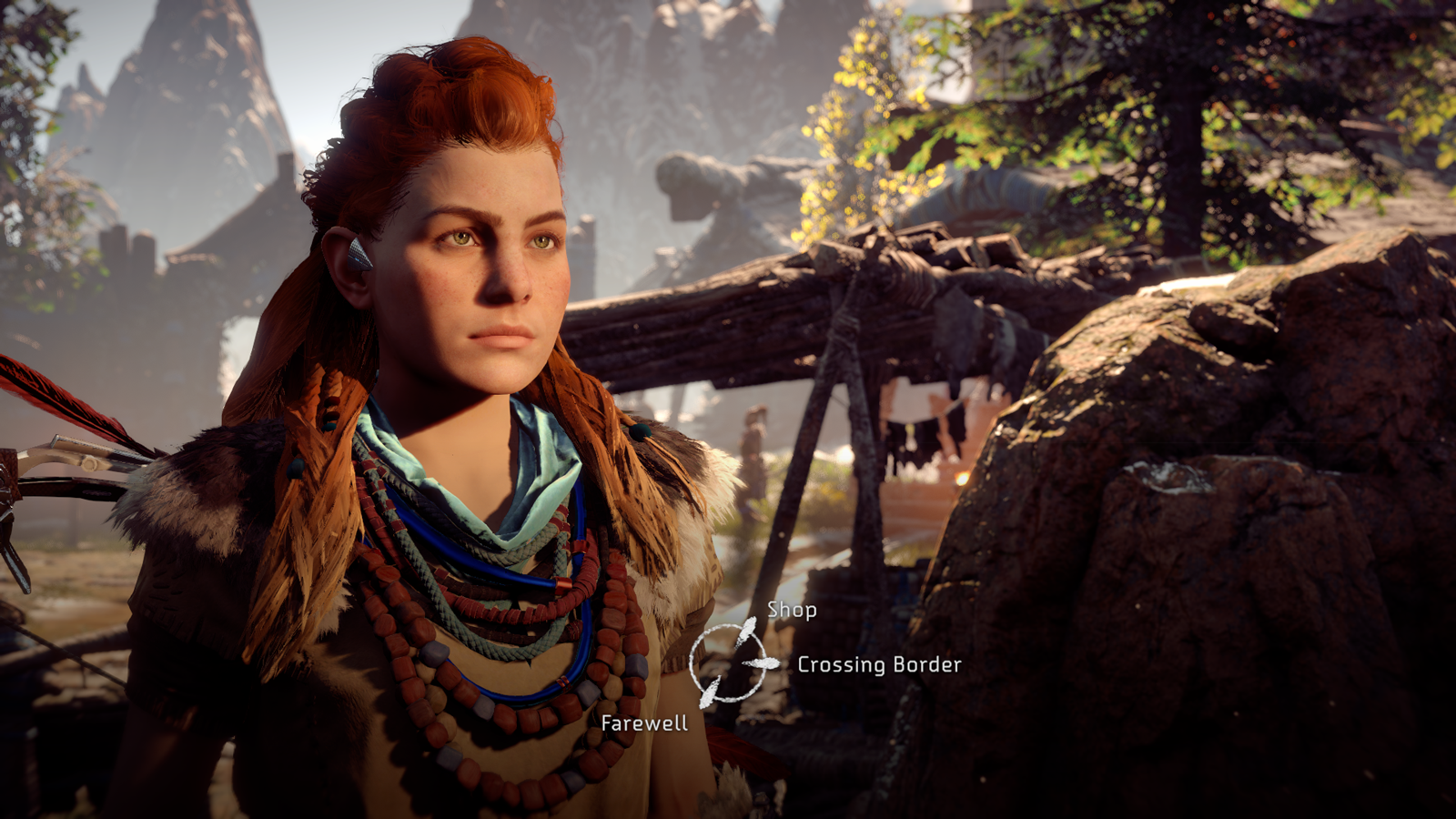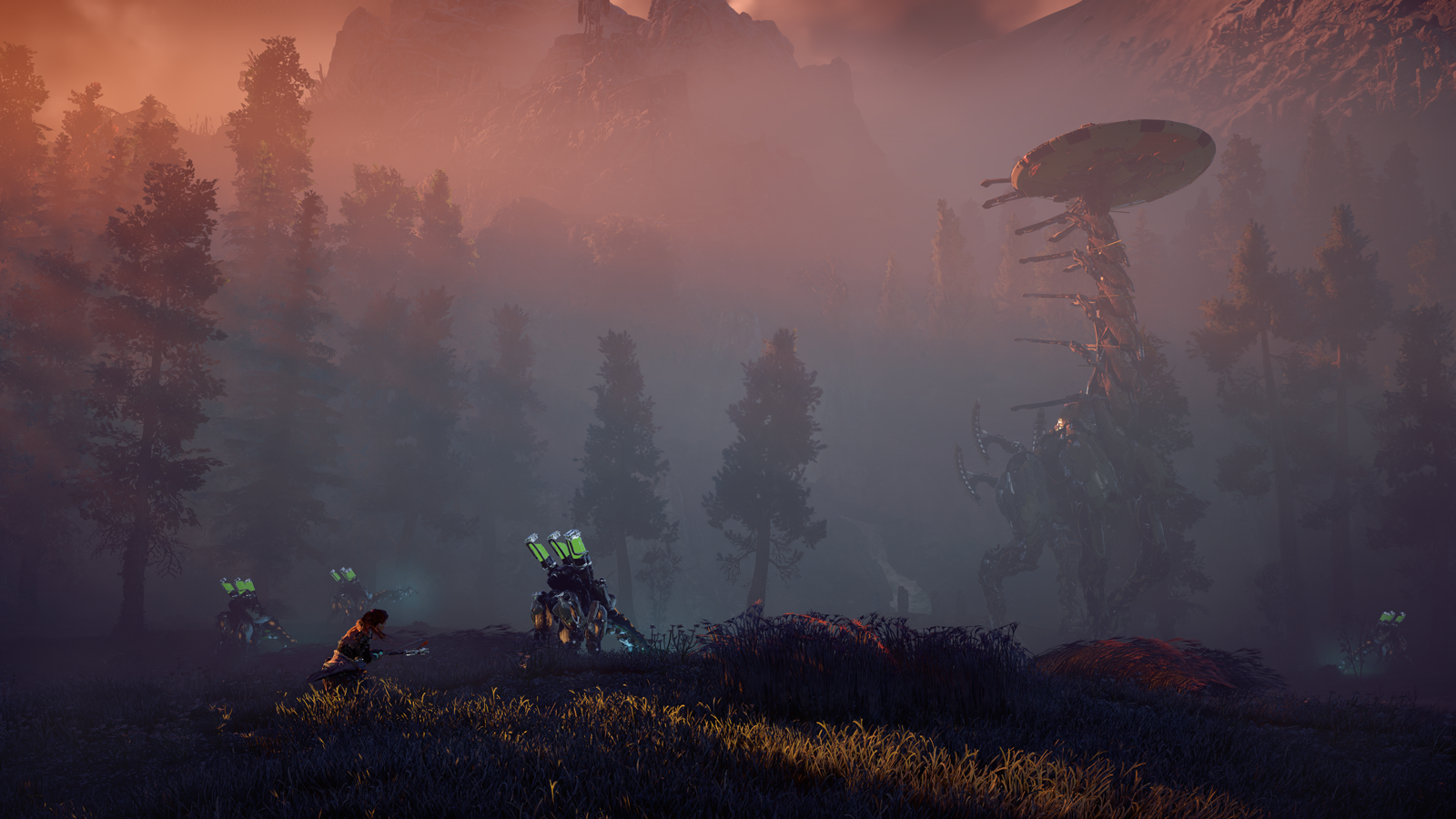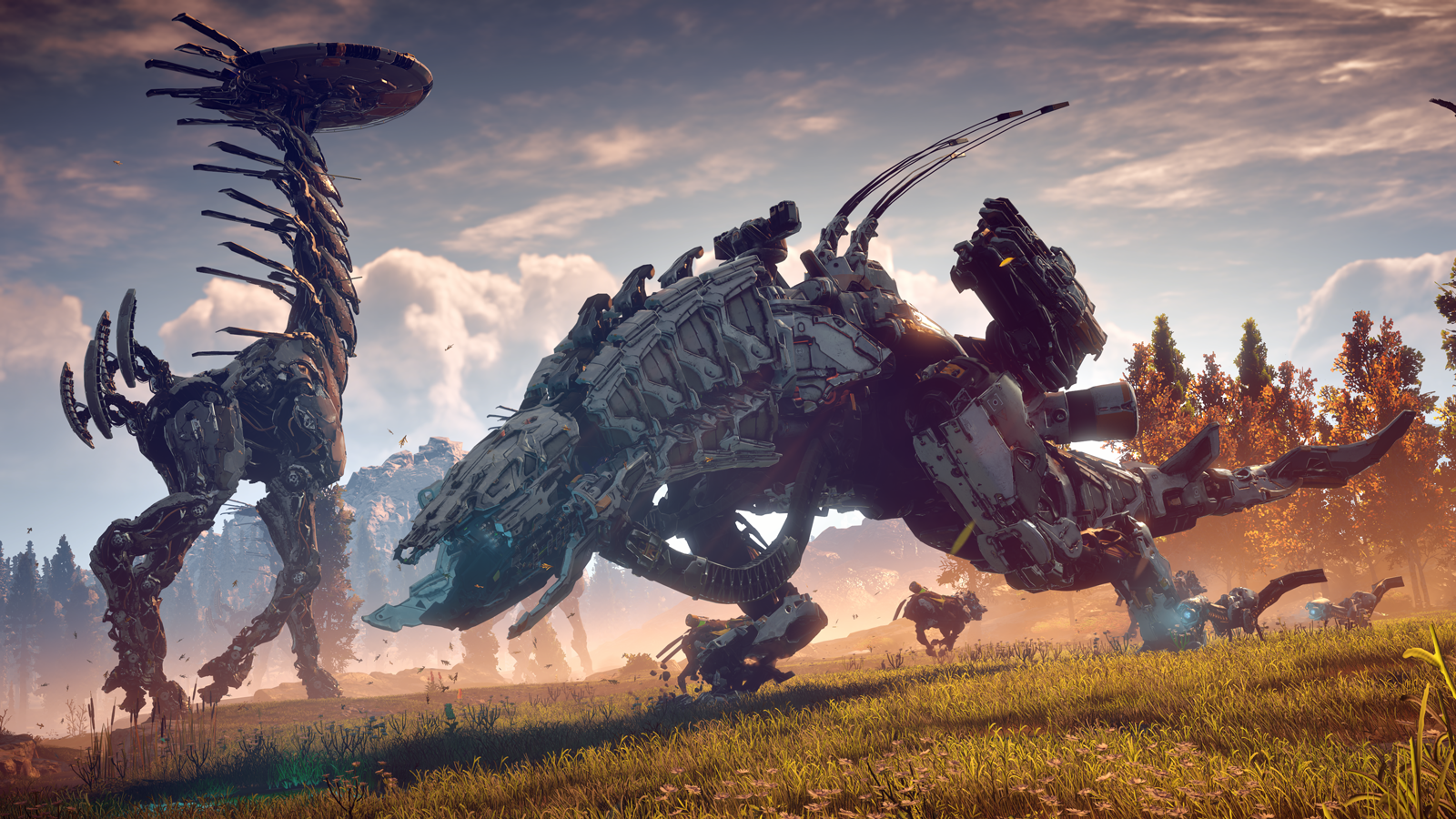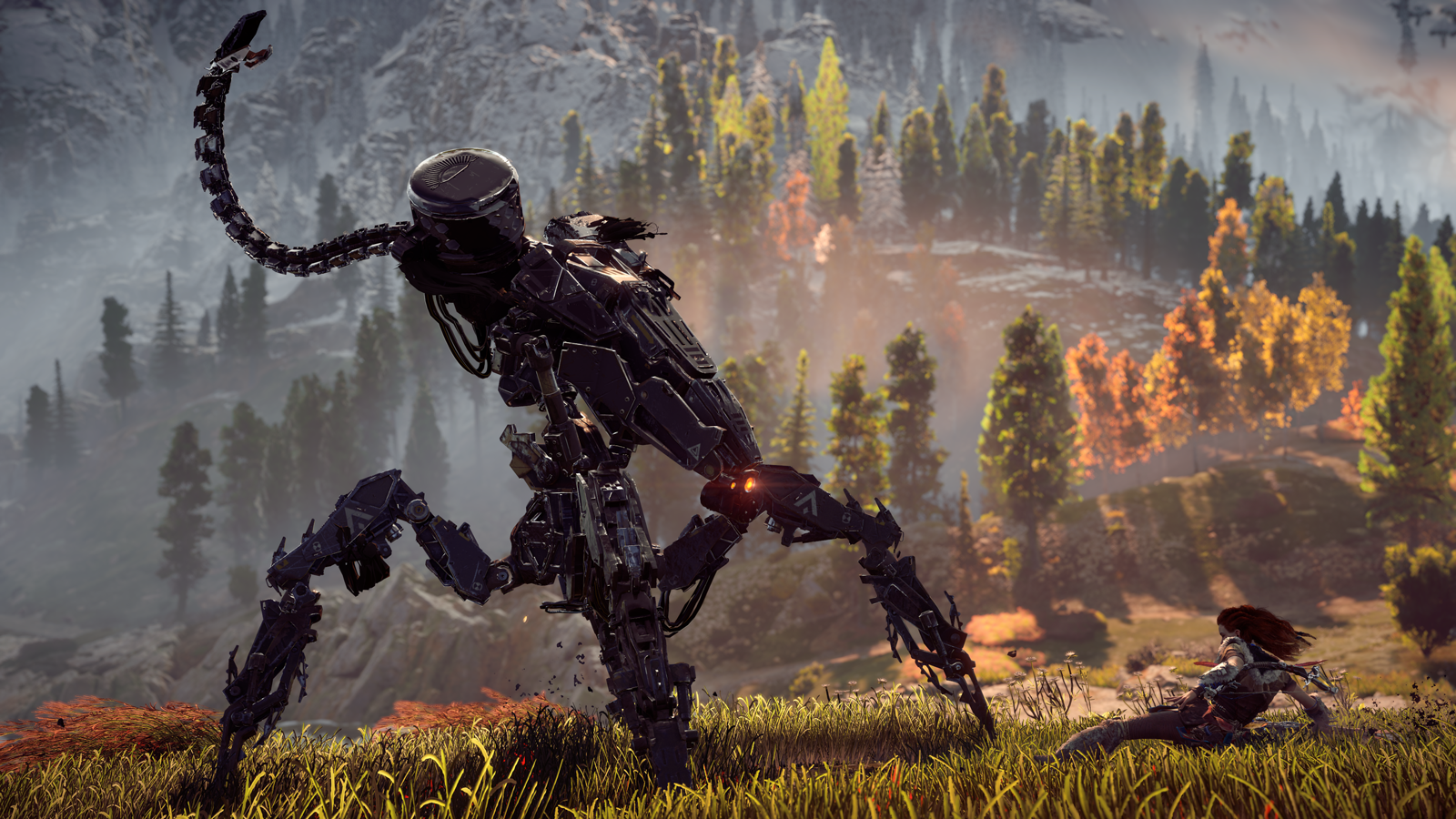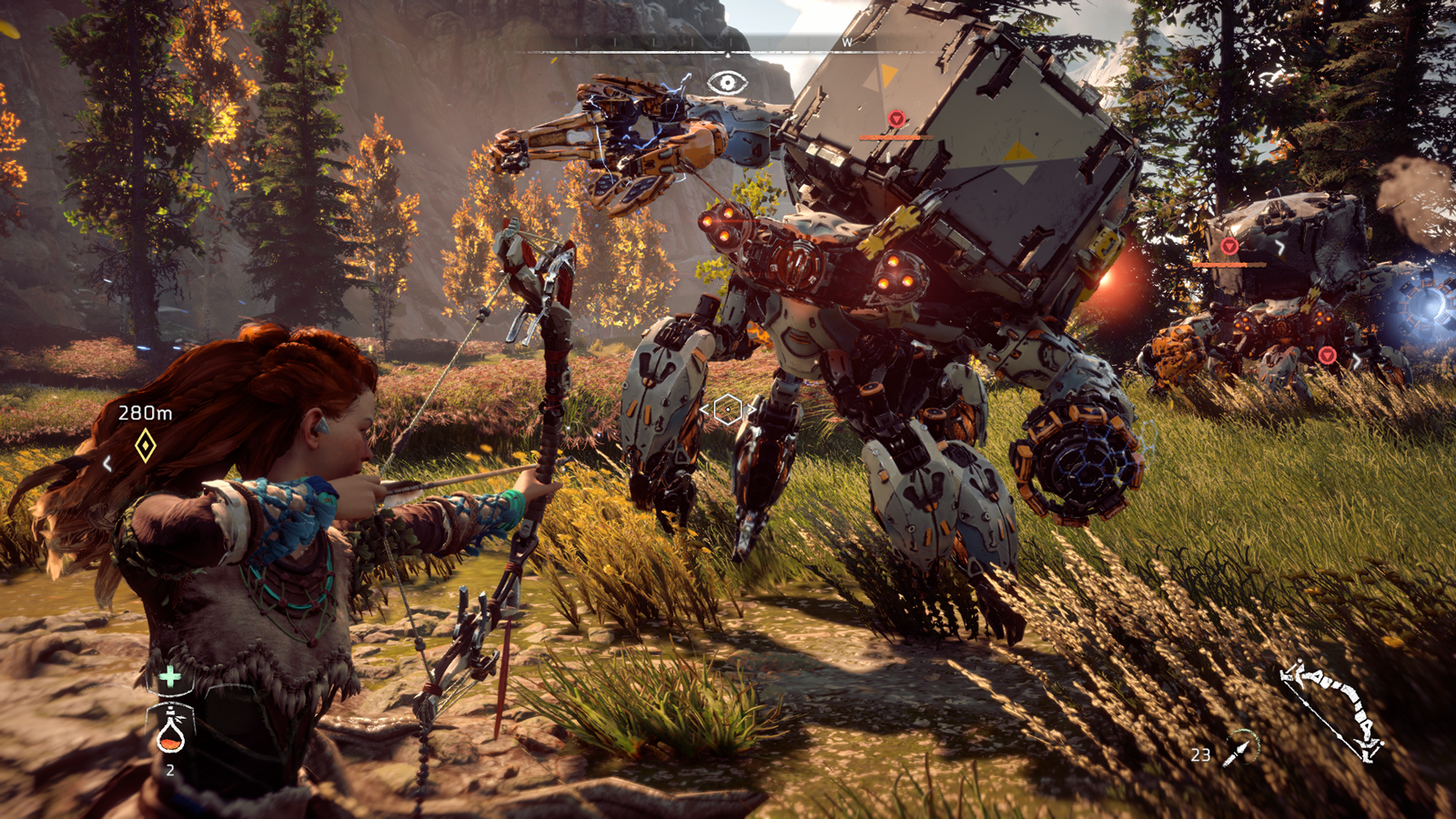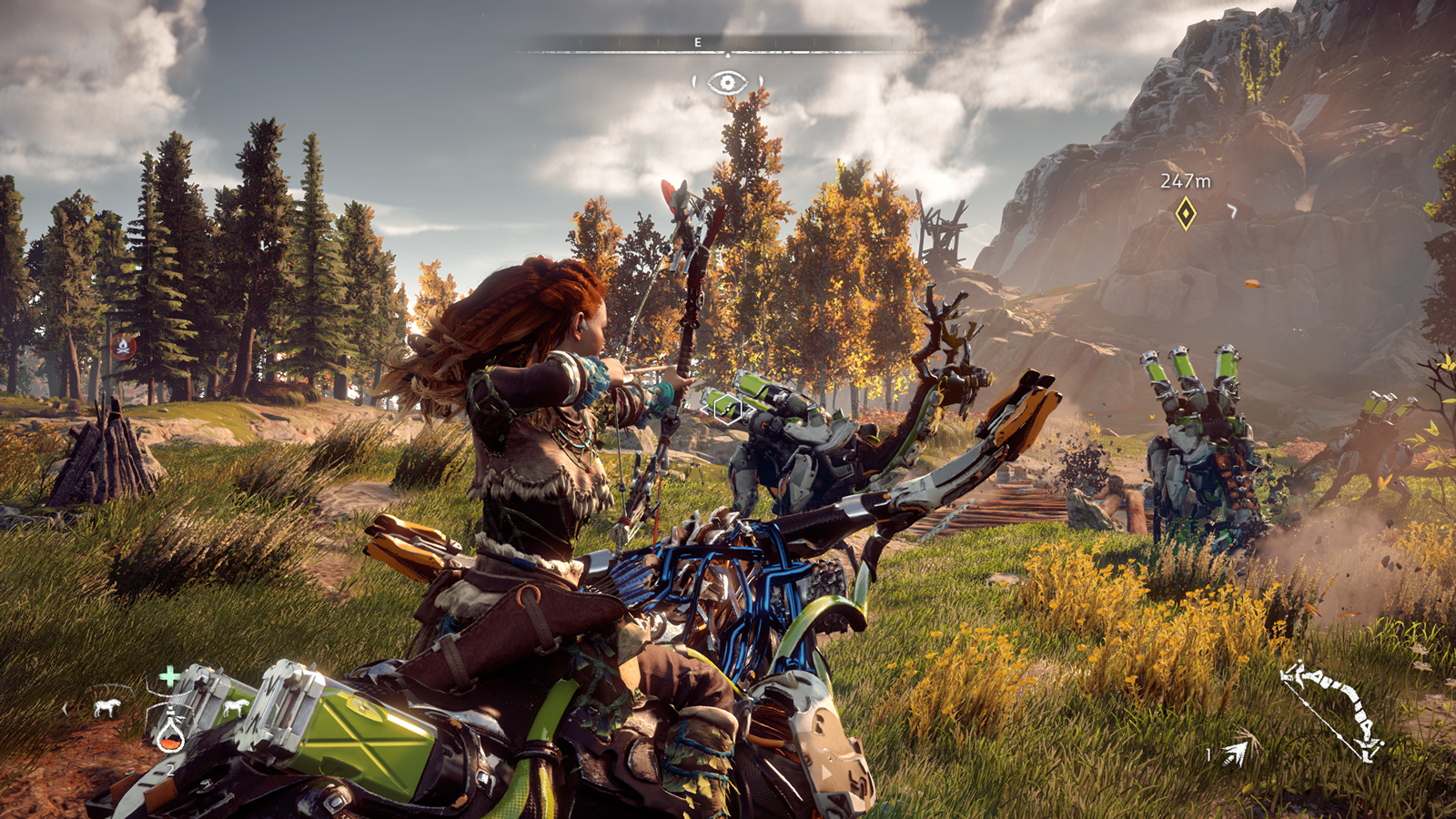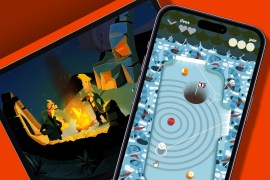Horizon: Zero Dawn review
It's the future, Jim, but not as we know it
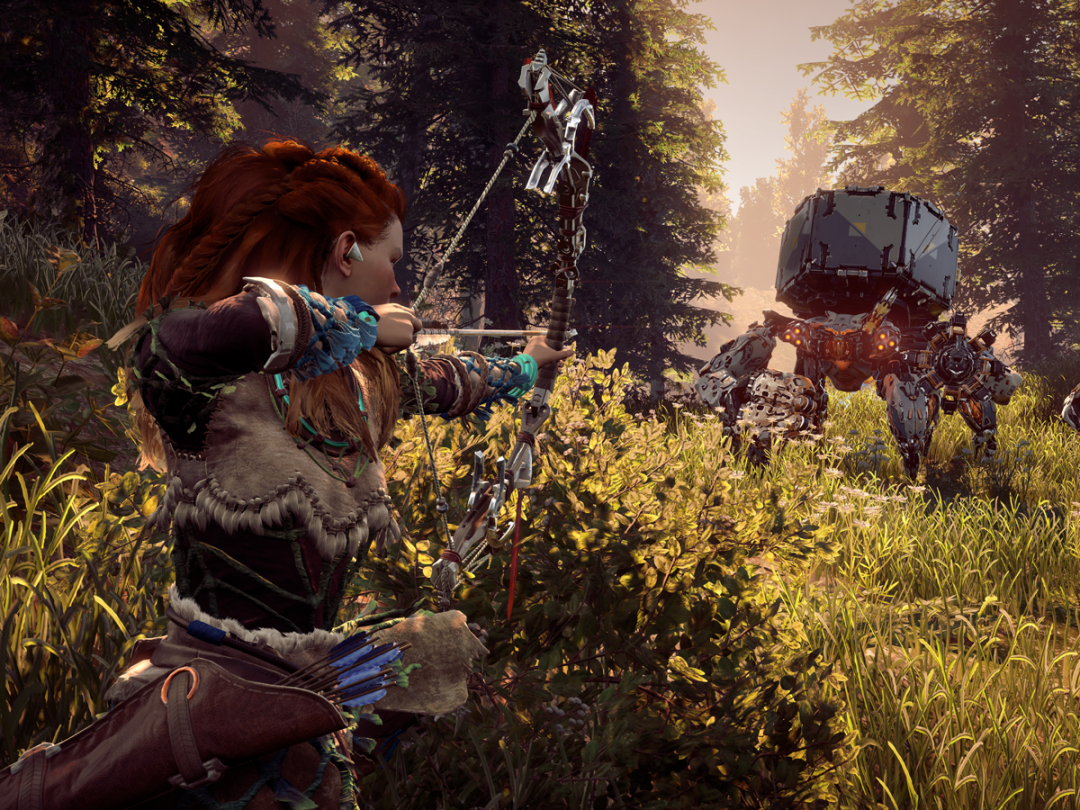
Remember Zoids?
Those little, plastic, clip-together robo-dinosaur things from the ‘80s that you’d wind-up and send marching across a table at whatever other toys you had knocking around at the time?
You don’t? Well someone at Guerilla Games must do, because I’ll be damned if they’re not the genesis for the attention-grabbing enemies in Horizon Zero Dawn.
It’s these animal-shaped machines that make Horizon stand out from the video game crowd. They’re brilliantly realised, too – a perfect blend of the biological and mechanical. Intricate constructs that are instantly reminiscent of the living creatures upon which they’re based, but that are also superbly threatening throughout.
But, while the machines might be the initial draw, they’re not actually the thing that keeps you playing. It’s not the excellent bow-and-arrow mechanics, either. It’s the story.
A note on spoilers: there won’t be any. I’m going to talk about the game’s setting and setup, but won’t detail any story elements that aren’t from the very beginning.
Days of future past
In the mythology of Horizon, we are the “Children of Metal” – an ancient civilisation that has long since been reclaimed by nature and reduced to nothing more than ruins and buried structures.
Humanity has regressed to a simpler time of tribes of hunter-gatherers wielding spears and bows, albeit ones that are often infused by pieces of found metal – and even occasional little bits of reclaimed technology.
You play as Aloy, a young woman, outcast by the Nora tribe at birth because she wasn’t actually ‘born’ at all, but instead simply appeared from within a sacred mountain. She spends her childhood being trained as a hunter by her guardian, Rost, and obsessing over who her mother might be.
Aloy returns to the tribe just as it suffers a devastating, unprovoked attack by a mysterious clan, and she finds herself being sent on a quest to track down those responsible.
As the player, hunting down these masked assailants isn’t actually particularly compelling – they seem somewhat generic and you feel no real attachment to the tribe – but being sent out into the wider world gives you the chance to search for answers to two burning questions: who is Aloy’s mother? And what happened to the Children of Metal?
Do you suppose, by any small chance, that it’s all interlinked somehow? Wouldn’t that be a turn-up!
You might also like › The Last Guardian Preview
A question of questing
At this point you’re free to go essentially wherever you fancy, following the thread of your main quest or allowing yourself to be distracted by the many extra activities that present themselves.
These are neatly split and organised into a number of categories: there are proper, meaty ‘side quests’ to do, ‘errands’ to perform, bandit camps to clear and ancient ruins to investigate – plus a whole lot more besides.
The variety on offer here is impressive and, unlike many open-world games, Horizon doesn’t absolutely bombard you with pointless, repetitive tasks that us completionists feel compelled to complete but that ultimately end up killing the enjoyment. Guerilla has found the perfect balance by giving you plenty to do but giving almost all of it some meaning and never overwhelming the player.
The developer reckons the main quest is completable in about 30 hours, but I reckon that would require a degree of single-minded focus that would take a lot of the fun out of the game. I’d expect most players to play for around 45 hours in total.
Along the way you’ll need to level-up, buy and upgrade weapons and armour and chat to loads of other characters, but don’t go into Horizon expecting a full-blown RPG. This is much more streamlined than the like of The Witcher 3 or Skyrim, with much less scope for endless tinkering. To my mind that’s a good thing – I’m not looking for another inventory-management game just now, thanks – but I do think it’s a shame that, unlike in those other games, your dialogue choices have little to no impact on any part of the story.
You might also like › everything you need to know about Days Gone
An open world of wonder
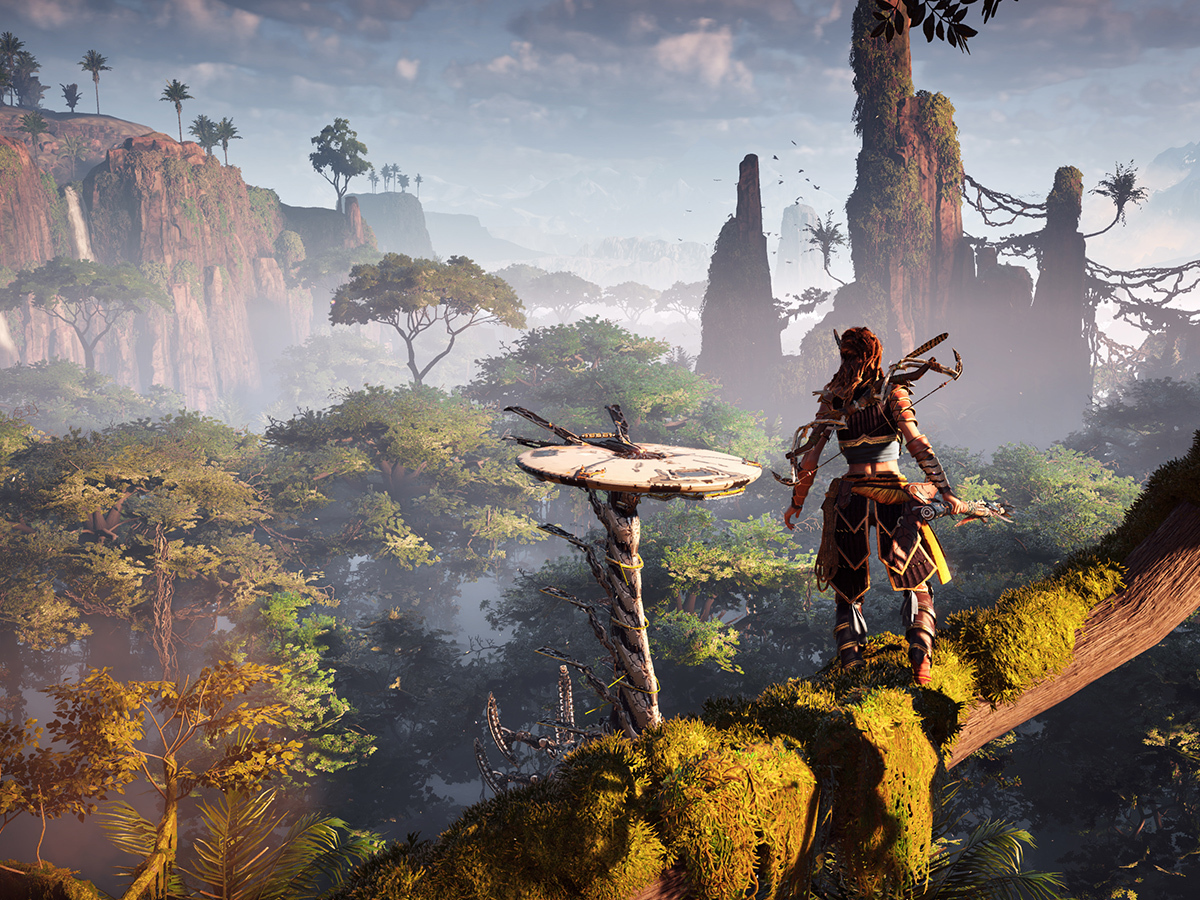
The world of Horizon is a thing of beauty. All rolling hills, mountain landscapes, flowing rivers and tall grass, all vividly realised, especially if you’re able to play on an HDR-capable screen.
Unsurprisingly, it looks best when played on a PS4 Pro, the 2160p checkerboard rendering adding a brilliant extra layer of detail and crispness.
Whatever hardware you’ve got, though, I heartily recommend delving into the settings and switching the HUD to its ‘dynamic’ setting, which makes all of the on-screen information disappear when it’s not needed, allowing you to better bask in gorgeous visuals.
This is a world that begs to be explored, especially when you catch a glimpse of our civilisation peaking through the undergrowth. Exploring these ruins is perhaps the most enjoyable part of the game, as it’s here that you can find text and audio logs from the Era of Metal. There’s genuine intrigue to be found in these insights into the end of a civilisation.
A smorgasbord of pointy things
But maybe you don’t care about that and you really bought Horizon so you could riddle mechanical animals with arrows. If so, you won’t be disappointed.
These machines are everywhere, and they vary massively in size and appearance. Some are essentially herd animals that pose little threat unless provoked, but most are on the lookout for humans and a real handful if they spot you.
The trick, then, is to make sure they don’t spot you, by moving around in the tall grass and behind cover. From a safe distance you’re able to use Aloy’s ‘focus’ (a thing that looks like a Bluetooth earpiece but can actually analyse nearby tech) to mark enemies and show their patrol routes, which allows you to plan the perfect stealth attack.
Most humans and some of the weaker machines (the velociraptor-like ‘watchers’, for example) can be killed with a well-timed melee insta-kill or single well-placed shot from the bow, but bigger enemies, of which there are many, are much tougher and much more complex. You need to analyse these for weak points that can then be targeted using the vast variety of different arrows and other weapons available to you as the game progresses.
The biggest machines have huge health bars and lots of different components that can be targeted, and the best battles see you running around and dodging the attacks from a huge machine while constantly switching weapons and taking shots as different weaknesses are exposed. At their best, these encounters are epic, exhausting and supremely satisfying.
The same can’t be said for melee combat, though, which is pretty basic and imprecise. It’s not so bad when fighting machines, as this tends to involve leaping out of the way of a charge before taking an opportunistic swipe with your spear, but when fighting other humans you find yourself button-mashing, with no real way to tell what your enemy’s doing and no parry button even if you could. We’ve grown accustomed to a certain level of hand-to-hand combat through the likes of The Witcher 3 and Rocksteady’s Batman games, and Horizon falls disappointingly short.
Borrowing from the best
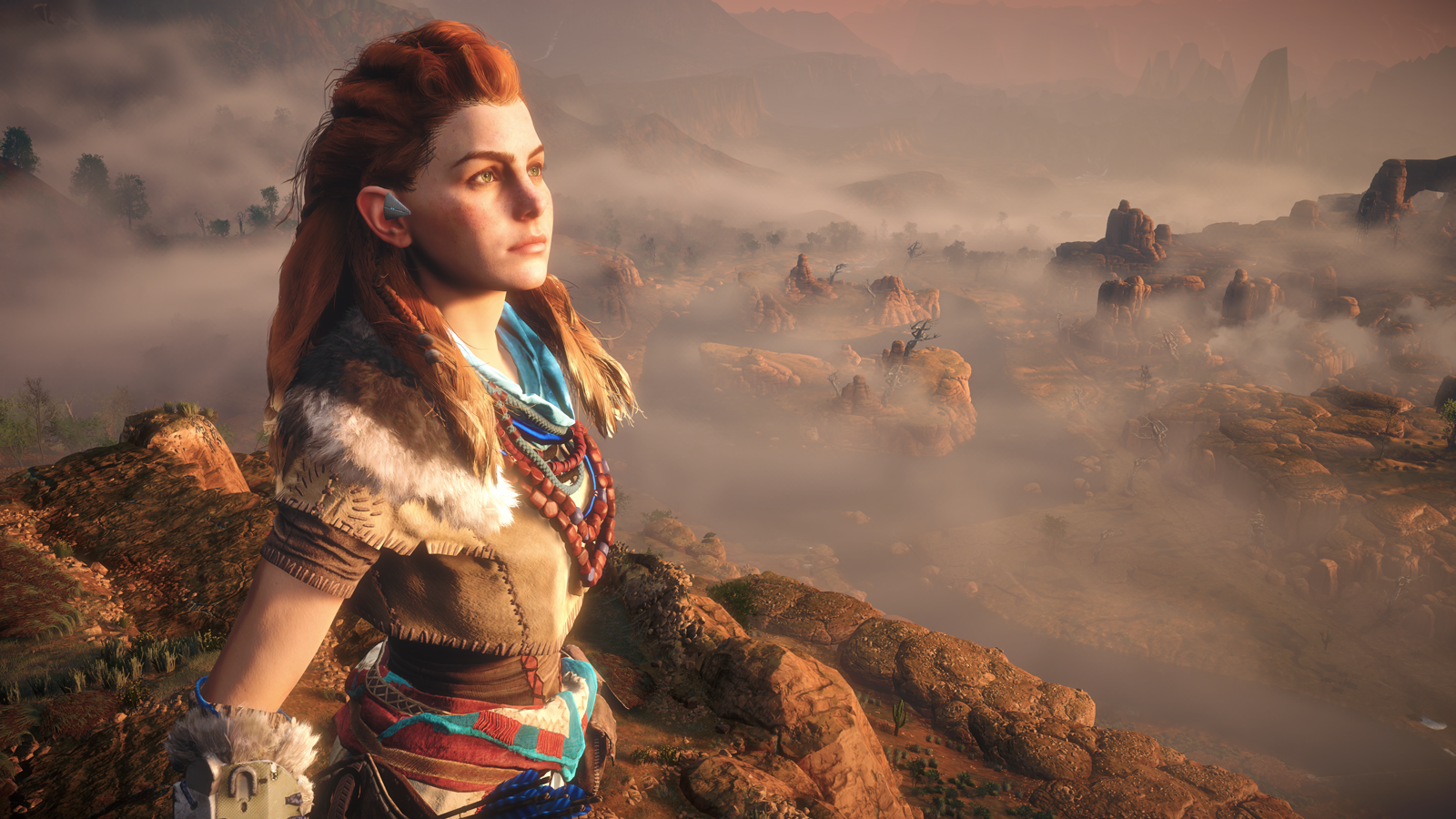
The fact that Guerilla hasn’t used the same sort of melee combat system as those other games is particularly surprising given how much Horizon borrows from other games. The stealthy bow and arrow action of Tomb Raider, the enemy camps of Far Cry, the witcher sense of The Witcher 3, the climbing of tall structures to reveal areas of the map of Assassin’s Creed.
It’s a real smorgasbord of current gaming tropes and techniques. Not that that’s necessarily a bad thing. Guerilla has cherry-picked some of the best elements of some of the best games of the last five years, and the result is a game constructed of lots of enjoyable elements. The result could have been a jarring mess, but Horizon’s unique setting and questing threads everything together nicely.
You’re never unaware of how much is borrowed from other games, but as you delve deeper into the mysteries surrounding Aloy and the previous civilisation, peeling back the layers of intrigue en route to the surprisingly affecting conclusion, you stop thinking about the mechanics as the pull of the story takes over.
There might not be a lot that’s mechanically new here, but Horizon’s mechanical fauna, stunning scenery and superb sci-fi story allow it to stand above the vast majority of modern games. May this be the first of many outings for Aloy.
Stuff Says…
The mechanical animals might be the bait, but it’s the story that will get you hooked on the brilliant, beautiful Horizon Zero Dawn
Good Stuff
The mechanical dino-animals are brilliantly realised
Genuinely compelling setting and story
Lots of the mechanics are borrowed, but they work
Looks utterly gorgeous, particularly on a Pro
Bad Stuff
Melee combat is rather basic
Your dialogue decisions amount to very little
